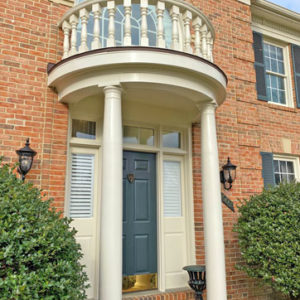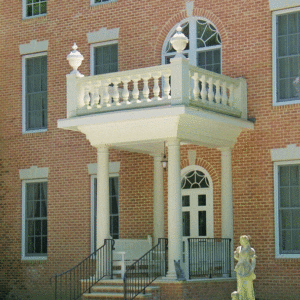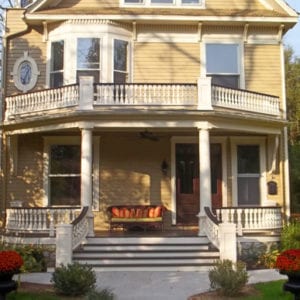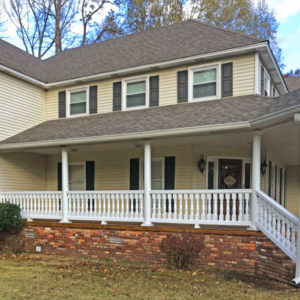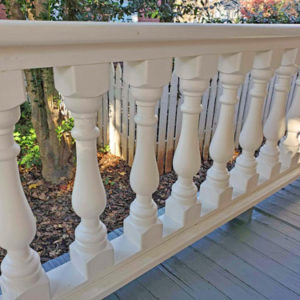Looking for balcony railing ideas? This gallery post aims to help you generate design ideas for your outdoor balcony railing project.
People use the term “balcony” in many ways, and we hope not to misuse the term. In this context, we are referring specifically to an overlook on a home. This design element is commonly over the front entry.
For a balcony that is accessible, of course you’ll need a railing. In those cases, you’ll want to meet local building code requirements such as railing height and baluster spacing requirements. Call or email our in-house porch professionals and we can help you achieve this.
On the other hand you’ll see many balcony rails in this gallery that are not accessible at all, and therefore are completely decorative. These as are sometimes called Juliet balcony railing. We see many “before and after” pictures from customers, and the transformation is amazing. The addition of a decorative outdoor balcony railing to a front entry can change your home from unnoticeable to show-stopper.
Actual feedback we’ve had from customers: “I have people just stop in off the road to see it.”, and “We have had so many compliments from friends, neighbors, and many strangers walking by the house.”, and my personal favorite: “You have no idea how many compliments we get. Strangers that are walking or driving wave at us as they go by, as they are embarrassed that they slow down so much to look, that we look back at them, so they wave like we are long lost buddies.”
Take your time and go through these pictures to help you generate balcony railing ideas for your project. You can find a balcony railing example similar to your home to help you decide on the size and design you want. This will enhance your home’s curb appeal.
What materials should I use on my balcony railings?
As you might know, we make both wood and synthetic railing systems. Wood railing is the choice of many because of it’s beauty and authenticity. We use rot resistant Cedar, and have designed our railings to help shed water which will help them last.
That being said, all wood does eventually rot. Because of the exposed nature of balcony rails which are always in direct contact with the elements, we often see our customers lean towards our synthetic (Poly) option.
We chose polyurethane as our synthetic alternative because it so closely mimics wood in it’s look and feel. It has the clean crisp lines that makes wood railings so beautiful. And has similar density to cedar which gives it it’s authentic feel. In other words, our poly railing looks, feels, and sounds like wood when you have your hands on it.
This is why, in extremely exposed applications like outdoor balcony railings, we typically recommend going with our synthetic railing offers. Most common Poly porch railing designs used on balconies are the 5 1/2″ Poly Balustrade. And for an even more robust option, our 7 1/4″ Poly Balustrade is popular as well.






